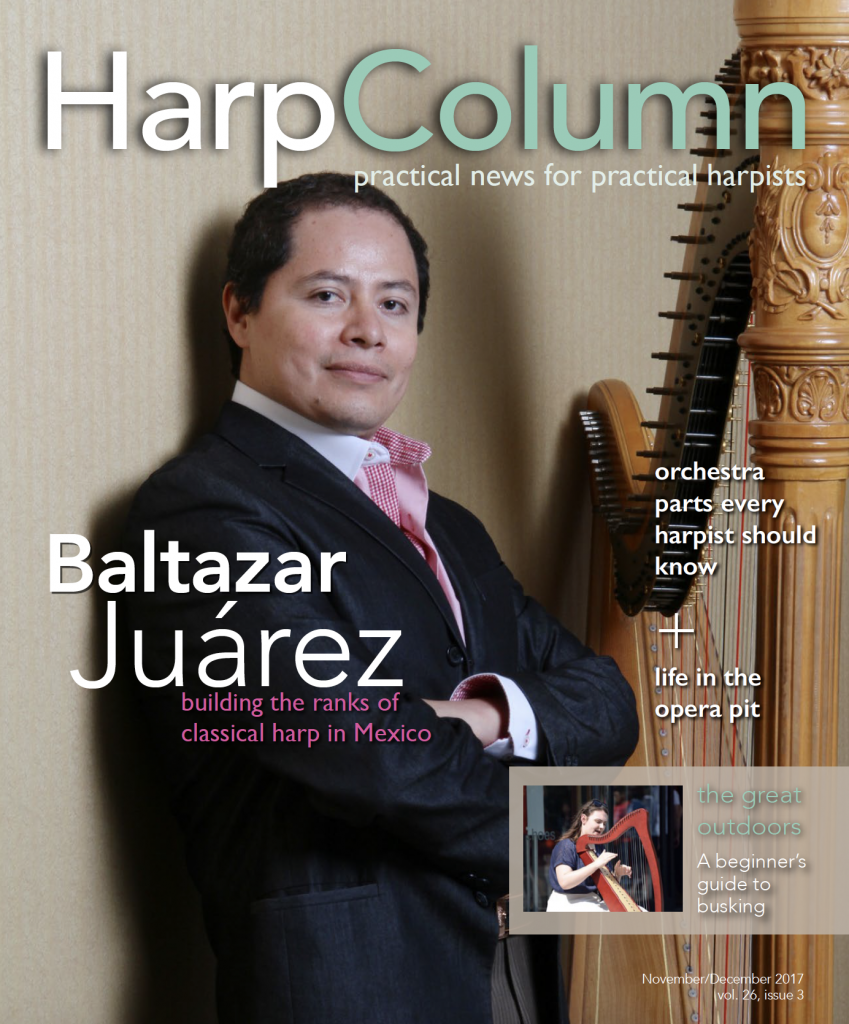Student Scenario #1: As the holidays approach, I am extra busy with all my playing engagements in addition to my teaching. The students don’t focus very well either. I don’t want to cancel all my teaching during this time, but I’m not sure how much we actually accomplish in a lesson when I’m so busy and they’re so distracted. Should I just let it all go until January?
Student Scenario #2: My students are always so scattered at the holiday season. They have school, orchestra, and church concerts, and preparing for those completely destroys my lesson plans. They sometimes cancel lessons because they are overbooked, and that makes the situation even worse. How can I help them stay on track, learn all their music, and keep myself from getting so frustrated?
First of all, take a hint from those airline safety procedures. Remember how you are always supposed to put on your own oxygen mask before assisting someone else with theirs? The same rule applies here. You must put your own musical “emergency equipment” in place before you can help your students. When you are frenzied about your schedule and playing commitments, you will communicate that stress to your students. When you are in control of your schedule, you can make their lessons a time of focus and order amid the chaos.
Consider the puzzle pieces you need to assemble to create order and relative calm for yourself. You need to plan for time to practice the music you will perform. You must juggle your usual commitments to accommodate extra rehearsals and concerts. You need a simple and efficient system to keep track of performance and rehearsal dates and times, directions to each, estimated travel time, and the required music. And naturally, you must plan ahead, not just for your own peace of mind, but in order to find adequate time for your students as well.
You may find it easiest to adopt a limited teaching schedule in December when the frenzy is at its peak. Options might be group lessons, every-other-week lessons, or even quick “check-up” lessons via Skype. The earlier you plan and communicate your plan to your students, the more smoothly your studio will run.
Once you have organized yourself as much as possible, prepare to use this time as a teaching opportunity, a chance for you to teach your students by your example. As long as they play the harp, this seasonal juggling act will be part of their lives. This is your chance to show them how to prioritize, balance, and stay calm during the holiday crush. Your organization and confidence will teach them what professionalism in music entails.
One of the first key skills I like to help my students learn is how to say no. This is a hard lesson for all of us, but there is a limit to how much one harpist can and should do. I recall one Christmas Eve that I played two matinée performances of the Nutcracker ballet and three evening church services at three different churches. I couldn’t move my shoulders by the end of the night. Help your students find the balance point in their schedules, and teach them how to turn down offers beyond their limit with grace, courtesy, and professionalism.
This is also a prime opportunity to help students learn to prioritize and systematize their practice. Even students who are usually resistant to this feel the importance and pressure of concert deadlines. Now your students will be at their most receptive to your suggestions for organizing their practice time so that they can meet their playing responsibilities and enjoy the opportunities that the season brings.
Another important concept you can communicate now is flexibility without compromise. Even though you may have to put some of the student’s usual etudes or repertoire on hold during the holidays, you can still work on many of the same key skills. Once the holidays are over, you can resume your lesson plans, and your students won’t have lost any ground.
For instance, “This Little Babe” from Britten’s A Ceremony of Carols is an excellent study in accurate chord placement. There is no better example of dominant seventh chord arpeggios than the “Waltz of the Flowers” cadenza. For many years, I have used Salzedo’s “Variations on O Tannenbaum” as my own seasonal technique warmup.
Lastly, allow for some fun and creativity. I encourage my students who aren’t loaded down with concert repertoire to create their own arrangements or medleys of seasonal music they enjoy. It’s an opportunity for us to investigate topics like improvisation, harmony, musical structure and to deepen the student’s musical experience.
Plus, when the rest of the student’s world (and mine) can be a whirl of happy holiday mayhem, it makes the lesson a moment of reflection, exploration, and possibly even inspiration—perfect ingredients for a peaceful holiday time! •






